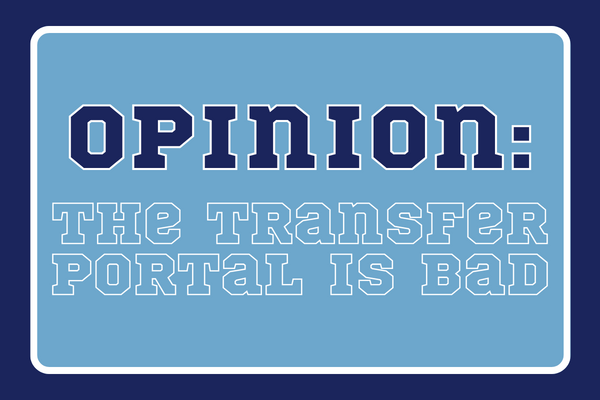Before 2022, student-athletes were required to graduate college before they could transfer. Now, with new transfer portal rules, there are hardly any regulations on transfers. The NCAA should change the transfer portal rules better to accommodate high school and Division II/III athletes, and to prevent athletes from playing at several different schools.
According to ncaa.org, approximately 5.77% of student-athletes play their sport at an NCAA-sanctioned college or university. There are a whopping 7,061,710 high school athletes across the United States. Playing a collegiate sport at any level is already an accomplishment, and as schools continue to recruit from the portal, the opportunities for younger student-athletes in their freshman and sophomore years are dwindling.
The NCAA also reports 20,911 Division I student-athletes entered the portal in 2022. A total of 10,324 Division II athletes entered the transfer portal, but only 3,033 successfully transferred to a new school. So when times get tough and athletes want to jump ship to another school, it is not guaranteed that they will find a new home to play at. Why is the NCAA encouraging athletes to abandon their teams when times get tough?
With the rise of recruiting from the portal, young athletes don’t get the same opportunities that they used to, because older players play for five to six years at several different schools. For example, players like Mycah Pittman and DJ Uiagalelei played at three different schools during their college football careers.
Another reason the transfer portal needs to change is because of the new Name, Image, Likeness (NIL) rules put in place across the NCAA. Coaches can use NIL opportunities to recruit top players in the country, and athletes can be enticed to enter the portal and transfer if a different school has better NIL deals. If the rules aren’t changed, certain schools and conferences will become powerhouses and recruit the best players in the nation due to NIL. Players do not have to sit out a season after transferring, so athletes aren’t deterred from entering the portal. In comparison, the UIL requires student-athletes to either sit out a year or get their previous coach to sign off on the transfer.
However, the transfer portal can be a great thing for student-athletes. Most athletes commit to their college around junior year of high school, so they are 16-17 years old when they make a decision that can determine the rest of their lives. If an athlete is not happy with their college, is struggling academically or financially, or has any circumstances that require them to change schools, they can move schools easily. This means that if an athlete decides they want to take a different route in life, they won’t be stuck where they chose when they were just a teenager.
Overall, even though there are some very important positive aspects of the transfer portal, it is contributing to an overall negative culture in NCAA athletics. The NCAA needs to adjust the rules of the transfer portal to create a more positive experience for its student-athletes.










